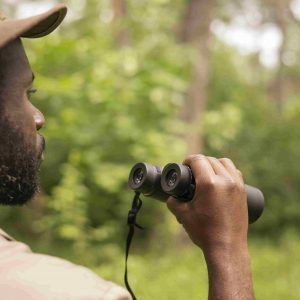Hunting has been a part of human culture since the dawn of civilization, and it’s at an interesting crossroads today. As environmentalism and conservation become more topical, many are beginning to question whether hunting is still a viable practice. With advances in technology, public awareness, and new approaches to management strategies being developed, there has never been a better time to consider what the future of hunting might look like while also taking into account its impact on our ecosystems. In this post we’ll examine how traditional hunting practices can be adapted for modern times alongside innovations such as commercial harvesting in order to find sustainable harmony between humans and nature.
The importance of hunting and conservation for maintaining wildlife populations
Whether you hunt for sport or subsistence, the importance of hunting and conservation cannot be overstated. Hunting is an important tool in managing wildlife populations by keeping them at healthy levels that are beneficial to all involved. It also helps prevent overpopulation and allows species to thrive in their natural habitats. Conservation efforts such as habitat restoration, wildlife management practices, and reintroducing endangered species can help maintain balance in the environment and keep animals from becoming endangered.
The impact of climate change on hunting and conservation efforts
Climate change is a major concern for hunters and conservationists alike because it affects how we interact with our natural resources. Rising temperatures can lead to smaller game population sizes due to changes in vegetation, water availability, disease transmission, migration patterns, and competition. Additionally, rising temperatures can also cause changes in the habitats of plants and animals, as well as shifts in their migration patterns.
New technology is being used to help hunters track and monitor wildlife
Thanks to advances in technology, hunters are now able to use modern gadgets such as GPS devices, drones, night vision goggles, and other tools to help them better understand animal behavior patterns, track game populations more accurately, and even survey areas to determine what species are present and where they can be found. This information helps hunters make informed decisions when it comes to hunting practices that reduce the risk of overhunting or harming protected species.
Strategies for sustainable hunting practices
Sustainable hunting practices involve using methods that do not harm the environment or wildlife populations. These strategies include using caution when hunting, understanding animals’ behavior patterns, and following regulations set by state and federal agencies. Hunters should also be mindful of the size of their game population and take steps to ensure that they do not overharvest a species. Additionally, hunters can use non-lethal methods such as tracking, calling, and trapping to harvest game humanely and reduce the impact of hunting on wildlife populations.
The dangers of overhunting and its effect on the environment
Overhunting can have devastating effects on wildlife populations, ecosystems, and even entire species. When too many individuals from a species are killed in a short period it can disrupt predator/prey relationships and throw entire ecosystems out of balance. Additionally, overhunting can lead to species extinction as well as reduced genetic diversity which can make populations more susceptible to disease and environmental changes.
How state and federal agencies are working to protect species from extinction
State and federal agencies such as the U.S. Fish and Wildlife Service work hard to regulate hunting practices to prevent the overharvesting of game species. They also use data collected from wildlife surveys, tagging programs, population counts, and other methods to track animal populations to better understand their behavior patterns and develop successful conservation strategies. In addition, these agencies use laws such as the Endangered Species Act of 1973 which protects endangered species from exploitation by commercial interests or recreational activities like hunting.
Conclusion
Hunting and conservation are closely intertwined, and the future of both depends on our ability to use sustainable practices that protect wildlife populations from overharvesting and extinction. By utilizing technology, understanding animal behavior patterns, following regulations set by governing agencies, and engaging in responsible hunting practices we can ensure a better future for all species. With continued effort from hunters, conservationists, and government entities alike we can continue to make progress towards protecting our wild areas and preserving the balance of nature for generations to come.





